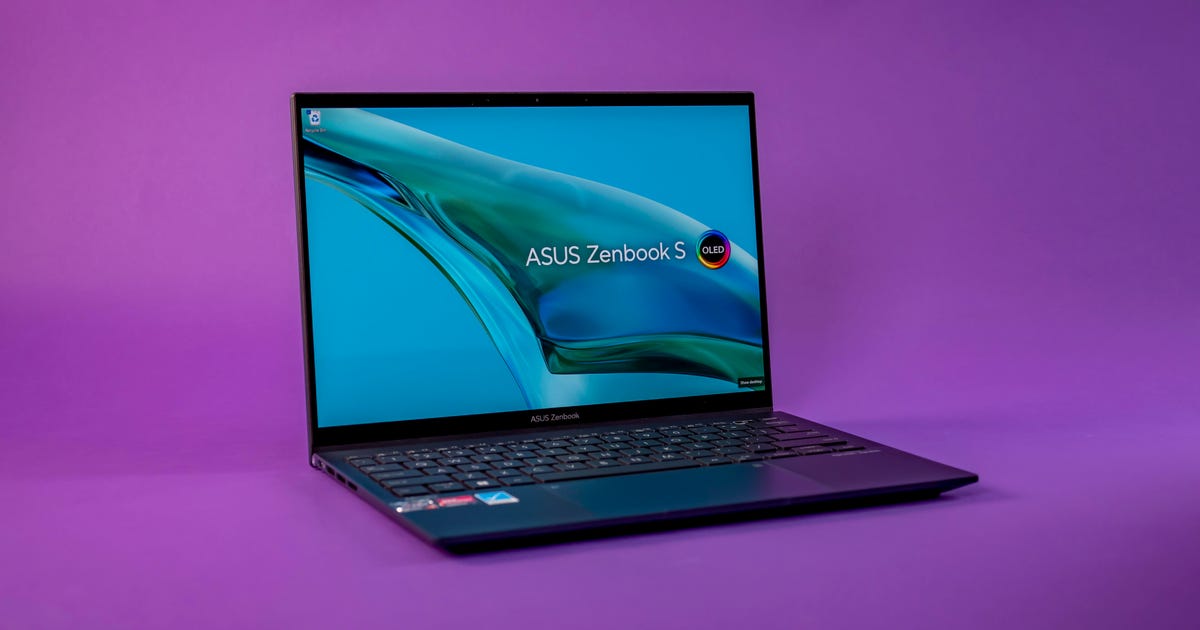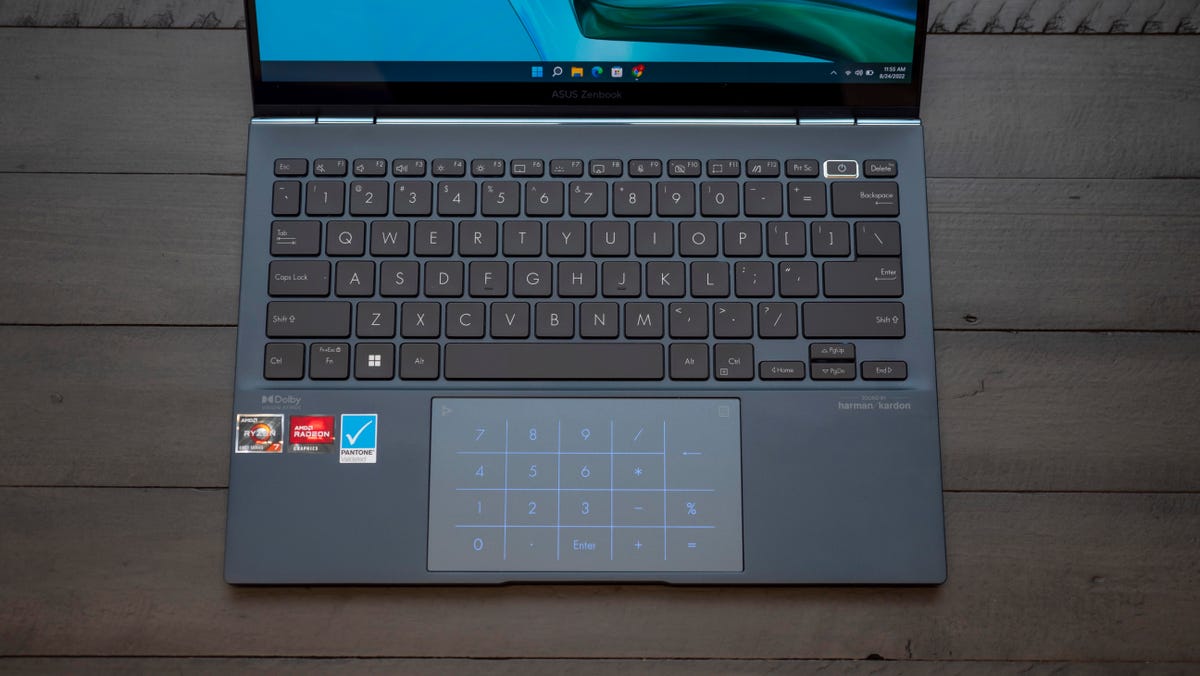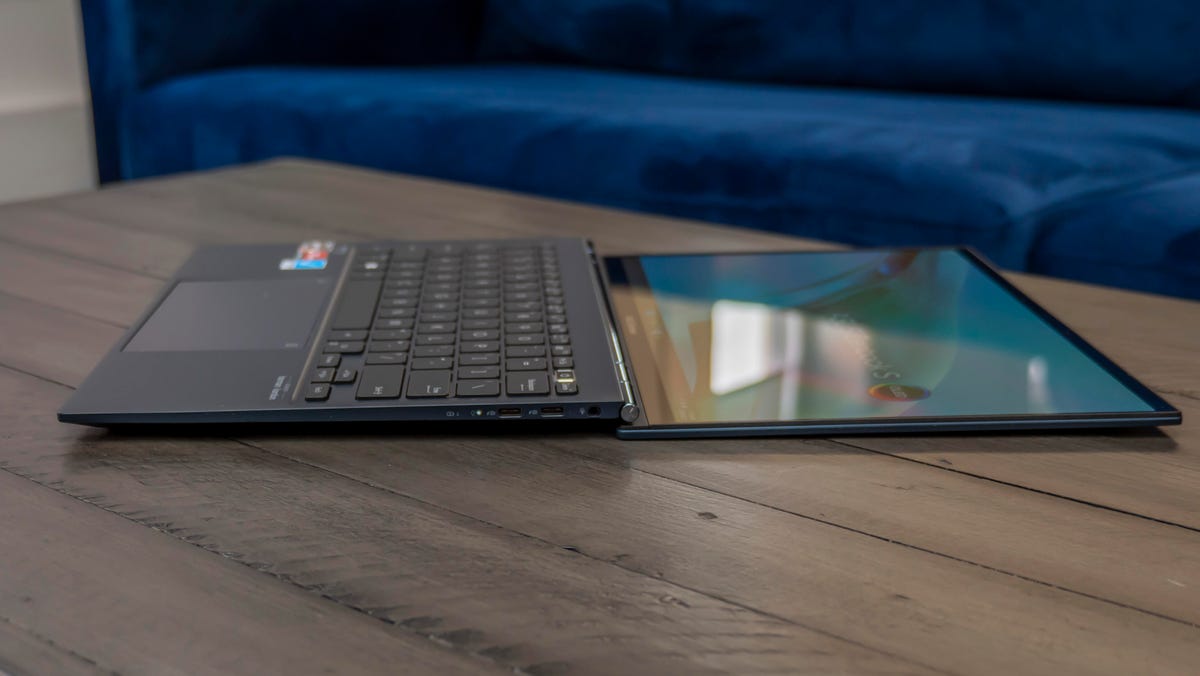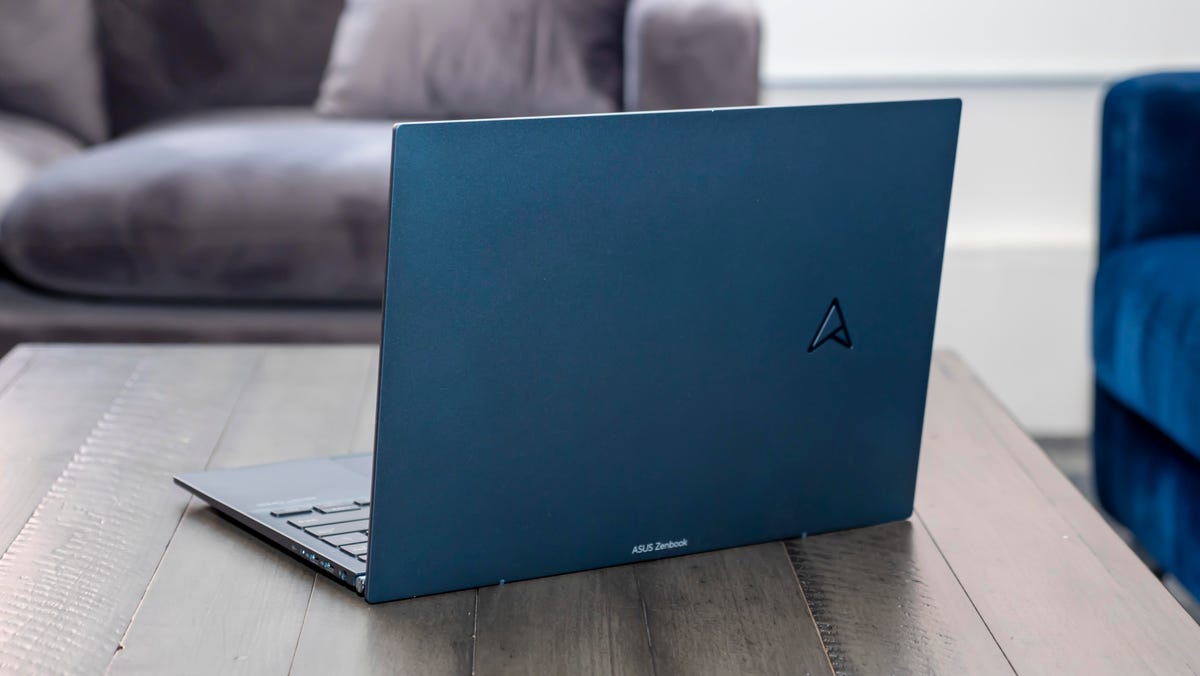Asus Zenbook S 13 OLED (UM5302) Review: Superb Little Ultralight Laptop
Asus zenbook s 13 oled um5302 review superbeets asus zenbook s 13 oled um5302 review superbad asus zenbook s 13 oled um5302 review wave asus zenbook s 13 oled um5302 review 360 asus zenbook s 13 oled um5302 review of related asus zenbook flip s13 oled asus zenbook s 13 9 asus zenbook s13 ux393ea asus zenbook s13 reviews asus zenbook specs asus zenbook stylus asus zenbook pro duo asus zenbook flip 15 asus zenbook q408ug

Asus Zenbook S 13 OLED (UM5302) Review: Superb Little Ultralight Laptop
It is not easy to find an ultralight laptop that still feels sturdy but Asus pulls it off with the Zenbook S 13 OLED. At 1 kilogram (2.4 pounds), the 13.3-inch laptop is lighter than the MacBook Air (M1 and M2) -- ideal for tossing in a backpack or shoulder bag without a second thought. Despite its compact footprint, Asus squeezed in a spacious keyboard and a big touchpad that doubles as a number pad when you need it. The 2.8K-resolution OLED touch display is exquisite for productivity, entertainment and creative pursuits, too. And although OLED screens typically put a big hurt on battery life, that's not the case here with the Zenbook S 13 OLED getting more than 12 hours during our streaming video test.
Like
- Ultralight design
- Long battery life
- Great-looking OLED display
Don't Like
- Gets hot during use, as does its petite power adapter
- 720p webcam
- Currently in short supply
Overall performance is strong from its AMD Ryzen 7 6800U processor backed with 16GB of fast DDR5 memory and an equally speedy 1TB SSD, keeping it competitive with others in its class such as the MacBook Air M2, Dell XPS 13 Plus and Acer Swift 5. (Check out the benchmark test results at the end of this review.) The thing is these components put out a lot of heat when the laptop gets cranking. Even with the fans blowing full bore, the bottom of the Zenbook S 13 will roast your lap. When you need the laptop's full power, use it on a desk.
Asus Zenbook S 13 OLED (UM5302)
| Price as reviewed | $1,300 |
|---|---|
| Display size/resolution | 13.3-inch 2,880x1,800 OLED touch display |
| CPU | 2.7GHz AMD Ryzen 7 6800U |
| Memory | 16GB DDR5 6,400MHz RAM |
| Graphics | 512MB AMD Radeon Graphics |
| Storage | 1TB NVMe PCIe 4.0 SSD |
| Connections | USB-C (x3, USB 3.2 Gen 2), 3.5mm combo audio jack |
| Networking | Wi-Fi 6E (802.11ax), Bluetooth 5.0 |
| Operating system | Windows 11 Pro 21H2 |
The ultralight magnesium-aluminum alloy chassis design, the OLED display and high-quality components mean the Zenbook S 13 isn't cheap; the configuration I tested is $1,300 (£1,300, AU$1,661). Consider the 14-inch HP Pavilion Plus if you don't mind trading some extra size, weight and less battery life to save a few hundred dollars. The bigger issue is that even if you want to spend the money for the Asus, you might not be able to find one. As of this review, the laptop is listed on Best Buy, Amazon and B&H but only the last one seems to have stock.

Press the calculator icon in the upper right corner of the touchpad to turn on Asus' NumberPad 2.0 feature.
Josh Goldman/CNETAsus always does a great job of packing some extra features into its laptops to help them stand out. You might be attracted to the brilliant and bright OLED, the 1kg weight and speedy components, but it's things like Asus' NumberPad 2.0 that make the difference. Tap on the calculator icon in the touchpad's upper right corner and a number pad appears on the touchpad so you can quickly input numbers or bang out a calculation or two. Plus, the software can tell the difference between entering numbers and using it as a touchpad, so you don't have to turn the feature on and off.
Then there's Asus' GlideX app, which mirrors or extends the Zenbook's display onto an Android tablet or phone, or an iPhone or iPad -- wired or wirelessly. Install the complementary Android or iOS app on your phone or tablet and after a simple setup, your mobile device is now an extra screen for the laptop. The mirroring option makes it possible to use mobile apps on the Zenbook's screen, too.

The display opens 180 degrees and supports an Asus active pen.
Josh Goldman/CNETThe Zenbook S 13 OLED also has function row hotkeys for taking screenshots and instantly killing the built-in mics and webcam to help protect privacy. Speaking of, the webcam is just 720p instead of the 1080p cams found in most premium laptops now. However, while it gives you less detail than a higher-resolution camera, the overall picture quality is quite good. The speakers sound surprisingly full, too, helped by Dolby Atmos.
Other nice touches include a fingerprint reader built into the power, support for using Asus' active pen on the touchscreen and, though the laptop only has three high-speed USB-C, Asus includes a USB-C-to-USB-A adapter as well as a laptop sleeve. Even the ultracompact 65-watt USB-C fast-charge adapter is nice (though like the laptop it gets pretty hot while charging).

The Asus Zenbook S 13 OLED is just a superb little laptop. If you want something lighter than a MacBook Air with a wide color gamut display, good performance and battery life and a smattering of convenient features, it's an easy recommendation. Here's hoping Asus can get supply up so people can more easily find it.
How we test computers
The review process for laptops, desktops, tablets and other computer-like devices consists of two parts: performance testing under controlled conditions in the CNET Labs and extensive hands-on use by our expert reviewers. This includes evaluating a device's aesthetics, ergonomics and features. A final review verdict is a combination of both those objective and subjective judgments.
The list of benchmarking software we use changes over time as the devices we test evolve. The most important core tests we're currently running on every compatible computer include: Primate Labs Geekbench 5, Cinebench R23, PCMark 10 and 3DMark Fire Strike Ultra.
A more detailed description of each benchmark and how we use it can be found in our How We Test Computers page.
Geekbench 5 (multicore)
Acer Swift 5 (SF514-56T-797T)
Lenovo Yoga 9i (14-inch, Gen 7)
Apple MacBook Air (13-inch, M2, 2022)
Dell XPS 13 Plus 9320
Asus Zenbook S 13 OLED
Note:
Longer bars indicate better performanceCinebench R23 CPU (multicore)
Acer Swift 5 (SF514-56T-797T)
Dell XPS 13 Plus 9320
Asus Zenbook S 13 OLED
Lenovo Yoga 9i (14-inch, Gen 7)
Apple MacBook Air (13-inch, M2, 2022)
Note:
Longer bars indicate better performancePCMark 10 Pro Edition
Asus Zenbook S 13 OLED
Lenovo Yoga 9i (14-inch, Gen 7)
Acer Swift 5 (SF514-56T-797T)
Dell XPS 13 Plus 9320
Note:
Longer bars indicate better performance3DMark Wild Life Extreme
Apple MacBook Air (13-inch, M2, 2022)
Dell XPS 13 Plus 9320
Lenovo Yoga 9i (14-inch, Gen 7)
Acer Swift 5 (SF514-56T-797T)
Asus Zenbook S 13 OLED
Note:
Longer bars indicate better performanceStreaming video playback battery drain test (minutes)
Apple MacBook Air (13-inch, M2, 2022)
Asus Zenbook S 13 OLED
Lenovo Yoga 9i (14-inch, Gen 7)
Acer Swift 5 (SF514-56T-797T)
Note:
Longer bars indicate better performanceSystem Configurations
| Asus Zenbook S 13 OLED | Windows 11 Pro; 2.7GHz AMD Ryzen 7 6800U; 16GB DDR5 6,400MHz; 512MB AMD Radeon Graphics; 1TB SSD |
|---|---|
| Dell XPS 13 Plus 9320 | Windows 11 Home; 1.8GHz Intel Core i7-1280P; 16GB DDR5 6,400MHz RAM; 128MB Intel Iris Xe Graphics; 512GB SSD |
| Apple MacBook Air (13-inch, M2, 2022) | MacOS Monterey 12.4; Apple M2 8-core chip; 8GB RAM; Apple 10-core GPU; 256GB SSD |
| Acer Swift 5 (SF514-56T-797T) | Windows 11 Home; 1.8GHz Intel Core i7-1280P; 16GB DDR5 6,400MHz RAM; 128MB Intel Iris Xe Graphics; 512GB SSD |
| Lenovo Yoga 9i (14-inch, Gen 7) | Windows 11 Home; 2.1GHz Intel Core i7-1260P; 16GB DDR5 5.200GHz RAM; 128MB Intel Iris Xe Graphics; 512GB SSD |
Source
